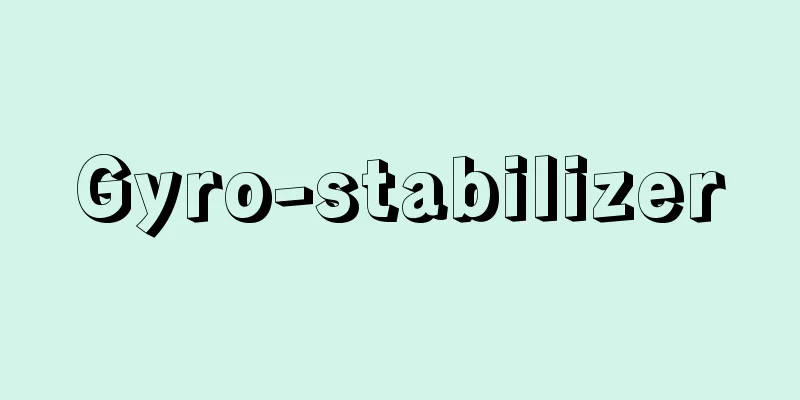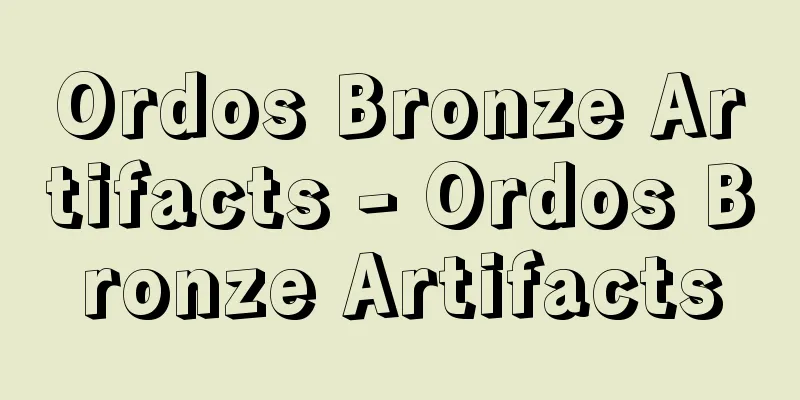Modern

|
A period division. (1) In Western history, the 15th and 16th centuries are generally called the modern era, with the Renaissance, the Age of Discovery, and the Protestant Reformation being considered the beginning of this period. However, this is merely a relative period division, and some people believe that the true modern society was established only after the abolition of the feudal system and the estate system through the civil revolution, as feudalism, a characteristic of the Middle Ages, continued in various forms even after it lost its political power. In this sense, the Industrial Revolution is considered a turning point in modern times on a world-historical scale, and the domination and colonization of non-European regions by advanced European countries was the flip side of European modernization. (2) In China, the modern era began around the time of the Opium Wars in the mid-19th century, but its seeds began to appear in the late Ming Dynasty in the early 17th century. If the start of modernity is the penetration of European capitalist power in Western Asia, and especially the "reforms" of the Islamic dynasties in the regions that opposed it, then the period can be considered to be the establishment of the Muhammad Ali dynasty in the late 18th century in Egypt, the Gülhane Edict of 1839 in Turkey, and the Constitutional Revolution of 1906 in Iran (→Iranian Constitutional Revolution). (3) In Japan, the period from the Meiji Restoration, when the feudal domain system of the Edo period, known as the early modern period, collapsed, is generally called the modern era. This is because the Meiji Restoration is considered to be the starting point of capitalism and the transition to a civil society. However, there is also a theory that considers the start of Japan's transition to capitalism to be the end of the Edo period, and that the start of modernity is the Tenpo Reforms and the arrival of Perry. Some theories place the end of modernity in 1917 with the birth of the socialist system in the Soviet Union or after World War II, and consider the period since then to be the present day. Source: Encyclopaedia Britannica Concise Encyclopedia About Encyclopaedia Britannica Concise Encyclopedia Information |
|
時代区分の一つ。 (1) 西洋史では,一般に 15~16世紀以降を近代と呼び,ルネサンス,大航海時代,宗教改革などがその幕あけとされている。しかしこれはあくまで相対的な時代区分であり,たとえば中世の特徴としての封建制にせよ,政治的な意味のそれが力を失ってのちも,社会経済的な封建制は絶対主義のもとでなおさまざまな形で存続したため,市民革命による領主制,身分制の廃止で初めて真の意味の近代社会が成立したとみる立場もある。近代を特徴づける思想傾向としては,個人主義,合理主義,世俗化,自由主義などがあげられ,科学,技術の進歩と結びついた産業資本主義の発達を近代化の起動力とみなす考えが有力である。その意味では産業革命が,世界史的な規模における近代の画期とみなされ,ヨーロッパ先進諸国による非ヨーロッパ諸地域の支配,植民地化は,ヨーロッパの近代化の裏面であった。 (2) 中国では 19世紀中期のアヘン戦争前後からを近代とするが,その萌芽は 17世紀初期の明末に生じている。西アジアではヨーロッパ資本主義勢力の浸透,とりわけこれに対抗する諸地域,イスラム諸王朝の「改革」を近代の起点とすれば,エジプトでは 18世紀末におけるムハンマド・アリー朝の成立,トルコでは 1839年のギュルハネ勅令,イランでは 1906年の立憲革命 (→イラン立憲革命 ) などをその時期と考えることができる。 (3) 日本では,近世と呼ばれる江戸時代の幕藩体制が崩壊した明治維新以降を近代と呼ぶのが一般的である。明治維新をもって資本主義化,市民社会化への出発点とするからである。ただ日本の資本主義化への始動の時期を幕末と考え,天保の改革やペリー来航をもって近代の始りとする説もある。近代の終りを 1917年のソ連の社会主義体制の生れた時期や,第2次世界大戦後におき,それ以降を現代としている説もある。
出典 ブリタニカ国際大百科事典 小項目事典ブリタニカ国際大百科事典 小項目事典について 情報 |
Recommend
Skeleton (English) skeleton sledding
A sled with steel runners. A winter sport in which...
Imperial Proclamation for the Revitalization of the National Spirit
It is the abbreviation of the Imperial Rescript on...
Sadamisaki Peninsula
A peninsula jutting out into the western part of ...
value of service theory
...In addition, with regard to public transportat...
"The Hill Where the Bells Ring" - Kaneno Naruoka
...Starting with "Hōrōki" (1961), he es...
diplomatic
…In addition to the discovery of these new materi...
Little Englandism
In the late 19th century, this term refers to the...
Claudius
…the family name of the first 5 Roman emperors. T...
Yoshihisa Amako
Year of death: August 28, 1610 (October 14, 1610) ...
Dark blue - Kougaki
Indigo dyeing business Konya This refers to the in...
Lanchester, FW (English spelling)
…This group was a highly interdisciplinary group ...
Methymna (English spelling)
…Olives are the main crop, and in ancient times w...
Desmodium oldhamii (English name) Desmodium oldhamii
… [Hiroyoshi Ohashi]. … *Some of the terminology ...
Lecythis usitata (English spelling) Lecythisusitata
...the seeds of several species of the genus Lecy...
Viverra
…The body has black stripes or spots on a yellowi...




![Katsuragi [town] - Katsuragi](/upload/images/67cb38a6ee808.webp)




